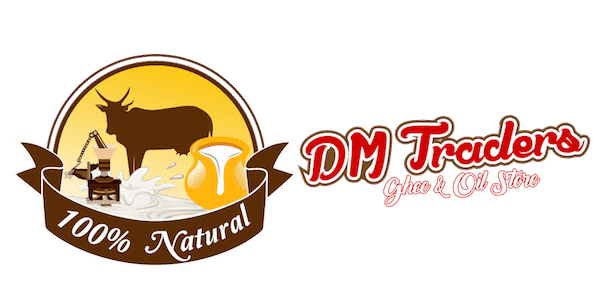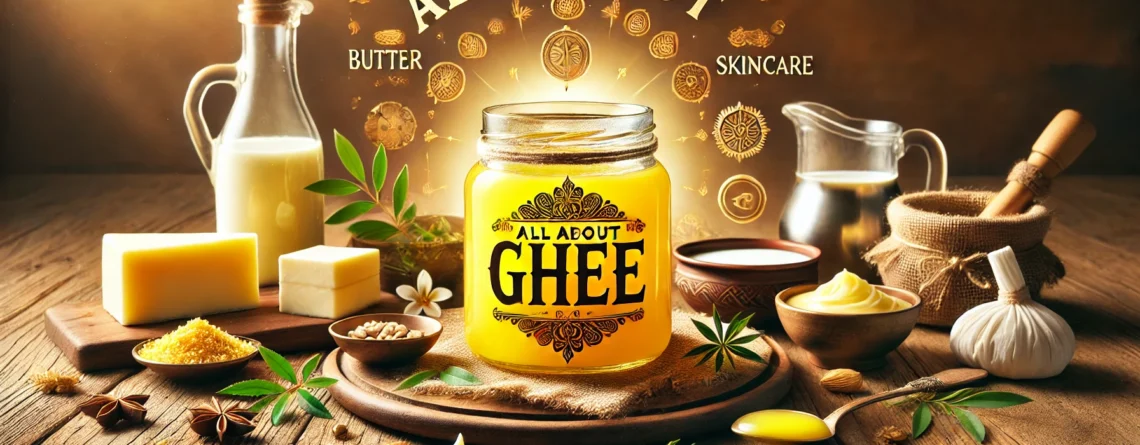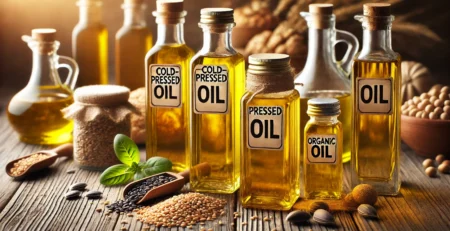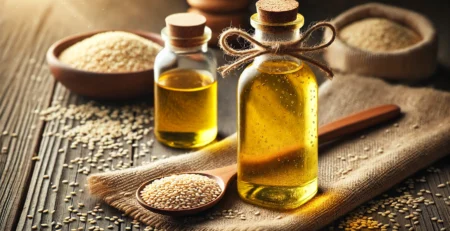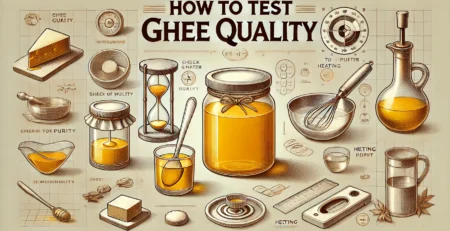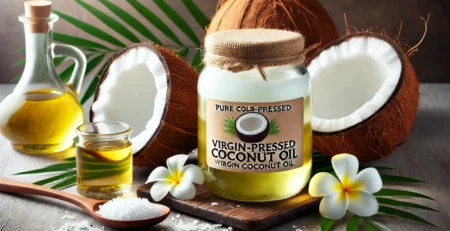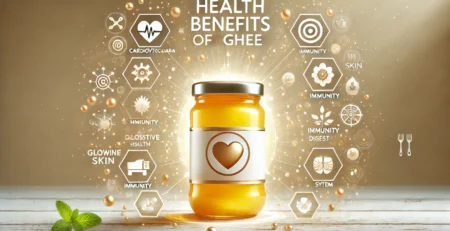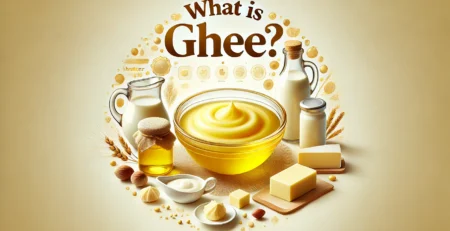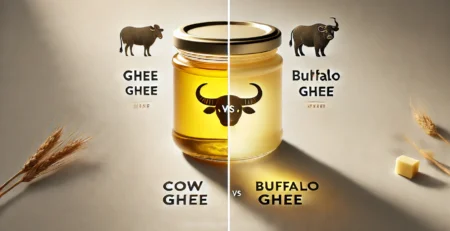All about Ghee: Most frequently asked questions about Ghee
All About Ghee: Benefits, Uses, and Health Facts | DM Traders
All About Ghee: What are the Benefits of Ghee?
Ghee, also known as clarified butter, has been a staple in Indian households for centuries. It is widely used in cooking and has been celebrated in Ayurveda for its numerous health benefits. Unlike regular butter, ghee is made by simmering butter to remove its water content and milk solids, leaving behind a rich and aromatic liquid fat. But why has ghee earned its place as a superfood? Let’s explore the incredible health benefits of ghee and why it’s more than just a kitchen ingredient.
1. Improves Digestion
One of the most well-known benefits of ghee is its positive impact on digestion. Ghee contains butyric acid, a short-chain fatty acid that helps in the healthy functioning of the digestive system. It promotes the secretion of digestive enzymes and helps in breaking down food more efficiently. Additionally, ghee acts as a lubricant for the intestines, making bowel movements smoother, thereby preventing constipation.
2. Boosts Immunity
Ghee is rich in antioxidants, which help neutralize free radicals in the body, strengthening the immune system. In Ayurveda, ghee is known as a “Rasayana,” which means it enhances overall vitality and longevity. The presence of fat-soluble vitamins such as A, D, E, and K helps in the absorption of essential nutrients, making the body more resilient to infections.
3. Good for Heart Health
Although ghee contains saturated fats, it is packed with healthy fats that are beneficial for heart health when consumed in moderation. The omega-3 fatty acids present in ghee help lower bad cholesterol (LDL) levels while increasing good cholesterol (HDL) levels, reducing the risk of heart diseases. Ghee also contains conjugated linoleic acid (CLA), which helps in maintaining heart health.
4. Enhances Skin Health
For centuries, ghee has been used as a natural moisturizer for the skin. Its deeply nourishing properties help in hydrating dry skin and maintaining its softness. Rich in essential fatty acids, ghee helps repair damaged skin and can be used as a topical treatment for burns, wounds, and even to reduce the appearance of wrinkles. A gentle massage with ghee leaves the skin glowing and rejuvenated.
5. Promotes Weight Loss
Yes, you read that right! Contrary to popular belief, consuming ghee in moderation can aid in weight loss. Ghee contains medium-chain triglycerides (MCTs), which are easily metabolized by the liver and used as energy instead of being stored as fat. This boosts metabolism and helps burn stubborn fat. Additionally, the butyric acid in ghee supports gut health, which plays a crucial role in weight management.
6. Strengthens Bones
Ghee is a great source of Vitamin K2, which is essential for calcium absorption in the bones. Regular consumption of ghee ensures that calcium is deposited in the bones and not in the arteries, helping prevent conditions like osteoporosis and maintaining strong bones. This is particularly beneficial for elderly individuals and those with joint or bone issues.
7. Supports Brain Function
In Ayurveda, ghee is considered a “medhya rasayana,” which means it enhances brain function. The fatty acids in ghee provide nourishment to the brain and improve cognitive functions such as memory, focus, and concentration. It is especially beneficial for growing children as it supports brain development. Adding a spoonful of ghee to your diet can help sharpen your mind and enhance mental clarity.
8. Lactose-Free and Safe for Lactose Intolerant Individuals
Ghee is made by removing milk solids, making it lactose-free. This makes it a safer option for individuals who are lactose intolerant or have dairy allergies. Ghee provides all the rich, buttery flavor without causing any digestive discomfort, making it a versatile ingredient for a wide variety of diets.
9. Provides Essential Fatty Acids
Ghee is a great source of essential fatty acids like omega-3 and omega-6, which are crucial for maintaining overall health. These fatty acids play a vital role in brain function, controlling inflammation, and promoting heart health. Unlike refined oils, ghee is a natural and wholesome fat source that provides these essential nutrients.
10. Boosts Energy Levels
Ghee is an excellent source of energy, especially for those following high-energy-demanding lifestyles. The MCTs present in ghee are rapidly absorbed by the body and converted into energy, making it an ideal food for athletes and individuals with active lifestyles. A tablespoon of ghee in the morning can give you an energy boost that lasts throughout the day.
All About Ghee: What is A2 Ghee?
A2 Ghee is made from the milk of indigenous cows, which produce the A2 type of beta-casein protein. Unlike regular ghee, which can be made from crossbred cows, A2 Ghee is believed to be healthier and easier to digest. It is also rich in nutrients like omega-3 fatty acids, which are good for heart health. A2 Ghee is particularly popular among those following traditional diets and Ayurvedic practices, as it is considered to be more natural and closer to the ghee that was consumed by our ancestors.
Which Ghee is Best?
The best ghee is one that is made from high-quality milk, preferably from grass-fed cows. A2 Ghee is often considered superior due to its purity and nutrient content. Cold-pressed or traditionally prepared ghee is also highly recommended as it retains most of the nutrients. It is important to choose ghee that is free from preservatives and additives, and always opt for organic or grass-fed varieties for maximum health benefits.
How Much Ghee Per Day?
Moderation is key when it comes to consuming ghee. For most individuals, 1-2 tablespoons of ghee per day is sufficient to reap its health benefits without consuming too many calories. However, the exact amount may vary depending on your lifestyle, activity level, and dietary needs. People who lead active lifestyles or follow ketogenic diets may consume slightly more ghee, as it is a good source of healthy fats.
How to Make Ghee from Malai?
Making ghee from malai (cream) is a simple process that can be done at home. First, collect the malai from the top of boiled milk over a few days and store it in the refrigerator. Once you have a sufficient amount, heat it in a heavy-bottomed pan over a low flame. Stir occasionally as the malai melts and separates into clarified butter and milk solids. Continue heating until the milk solids turn golden brown, then strain the liquid to remove the solids. The remaining liquid is your homemade ghee.
How to Consume Ghee in the Morning?
One popular way to consume ghee in the morning is by adding it to warm water or herbal tea. This helps kickstart your metabolism and provides a boost of energy. You can also add a spoonful of ghee to your morning coffee, a practice known as “bulletproof coffee,” which is popular among those following a ketogenic diet. Another option is to consume ghee on an empty stomach, which is believed to aid digestion and detoxify the body according to Ayurveda.
How to Use Ghee for Skin Whitening?
Ghee is a natural moisturizer that can help brighten your skin when used regularly. To use ghee for skin whitening, mix it with a few drops of lemon juice and apply it as a mask. Leave it on for 15-20 minutes before washing it off with lukewarm water. Ghee’s fatty acids nourish the skin, while lemon juice helps lighten dark spots and pigmentation. Regular use can result in a more even skin tone and a radiant complexion.
How Many Calories in Ghee?
Ghee is a calorie-dense food, with approximately 120 calories per tablespoon. The majority of these calories come from fats, which include saturated, monounsaturated, and polyunsaturated fats. Although ghee is high in calories, it is also rich in essential fatty acids and nutrients, making it a healthy fat option when consumed in moderation.
How to Make Ghee from Milk?
To make ghee from milk, start by boiling full-fat milk and allowing it to cool. Once cooled, a layer of malai (cream) will form on the surface. Collect this malai over several days and store it in the refrigerator. When you have enough malai, churn it to separate the butter from the buttermilk. The butter is then heated over low heat until the milk solids separate and turn golden brown, leaving behind the clarified liquid ghee.
Which Ghee is Best for Health?
Organic, grass-fed ghee is generally considered the best for health as it is rich in nutrients like omega-3 fatty acids, conjugated linoleic acid (CLA), and fat-soluble vitamins. A2 Ghee, made from the milk of indigenous cows, is also highly recommended for its purity and digestibility. It is important to choose ghee that is free from additives, preservatives, and artificial colors to ensure you are getting the healthiest option.
All About Ghee: Conclusion
From improving digestion to enhancing brain function, ghee is indeed a superfood that offers a wide range of health benefits. However, like all things, moderation is key. Including ghee as a part of a balanced diet can promote overall well-being and help you lead a healthier life.
If you’re looking to add pure, high-quality ghee to your diet, look no further than DM Traders’ Pure Cow Ghee. Whether you’re buying it for cooking or its health benefits, ghee from DM Traders ensures that you get the finest quality. Visit our store today and explore a wide range of health-focused products.

